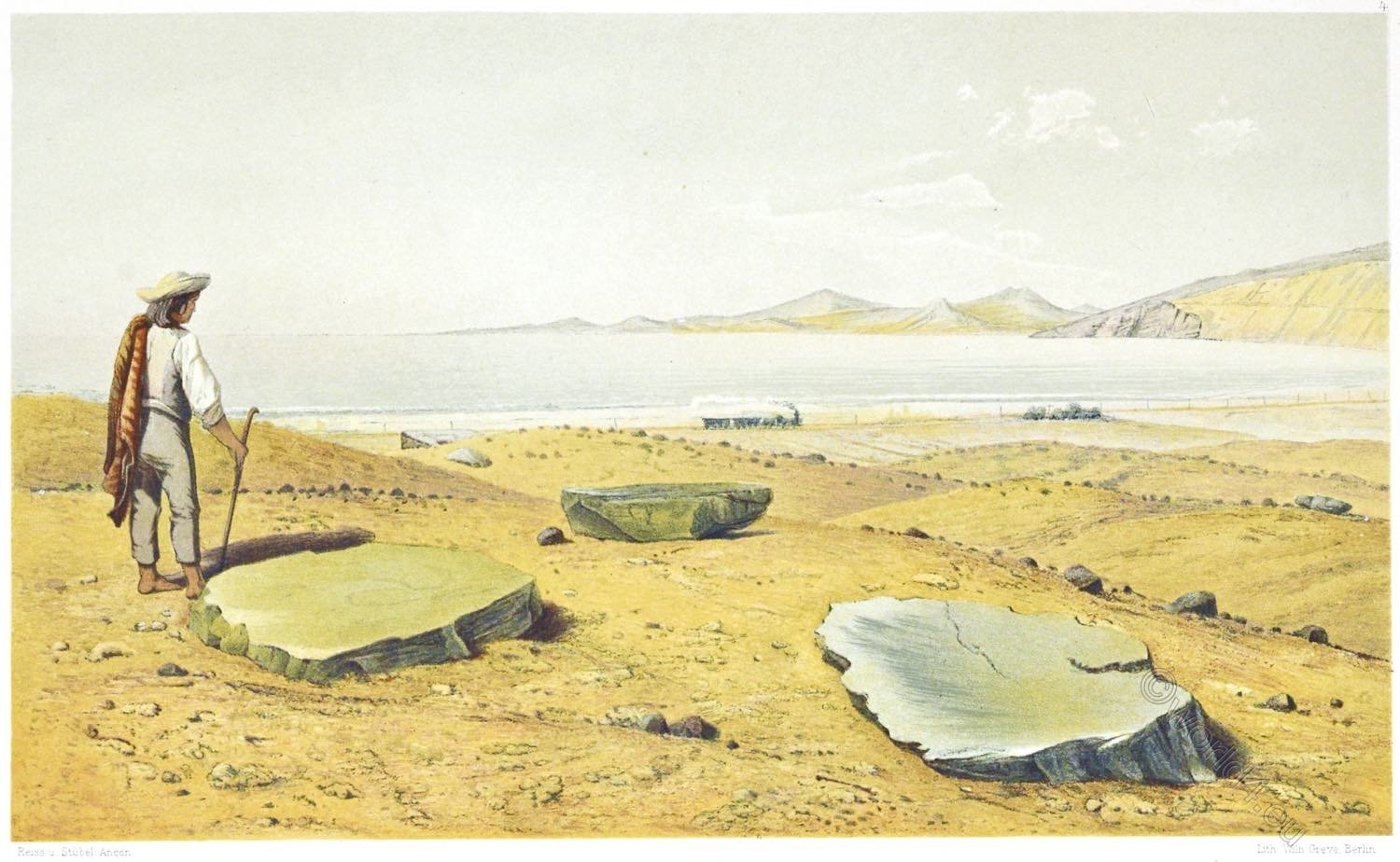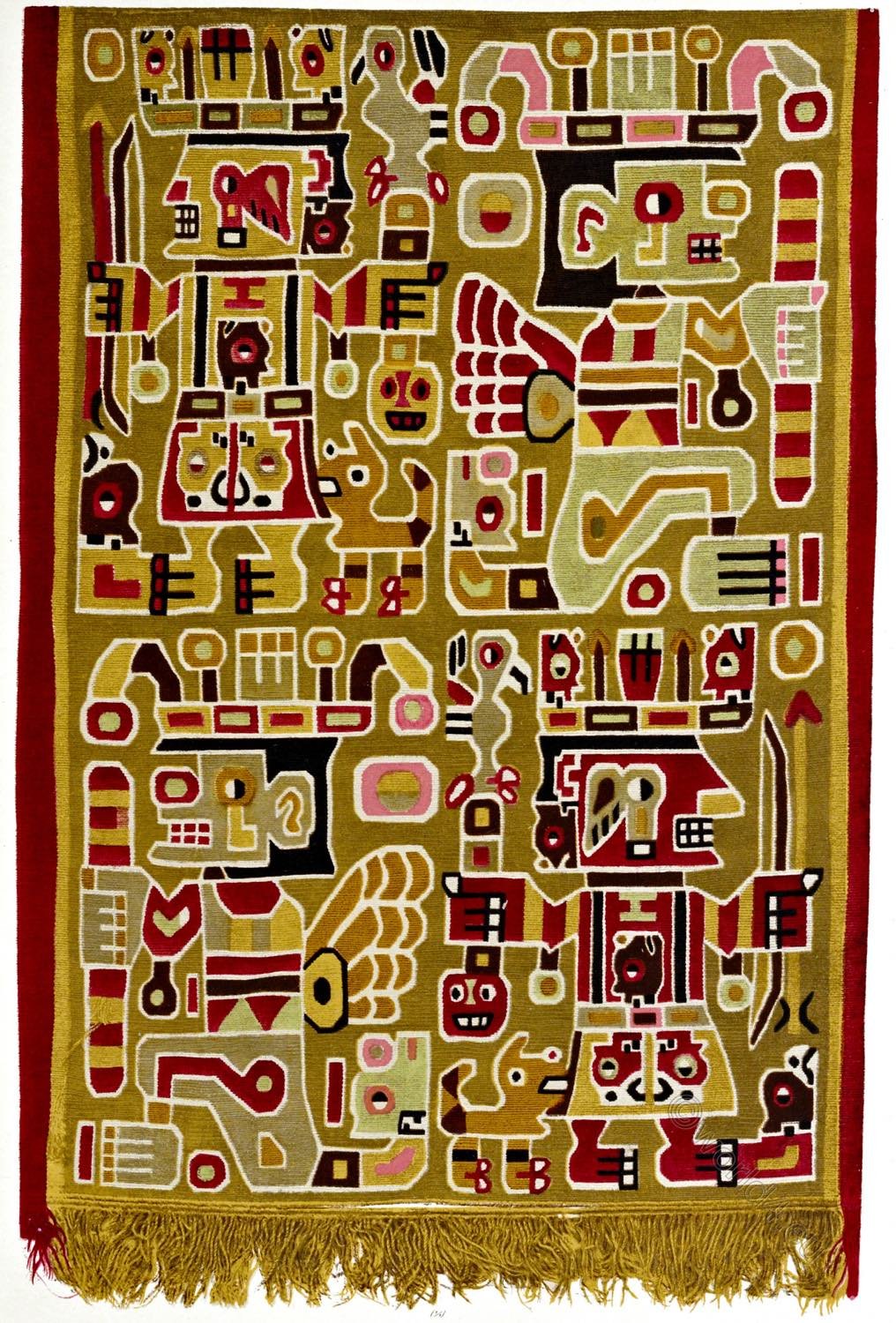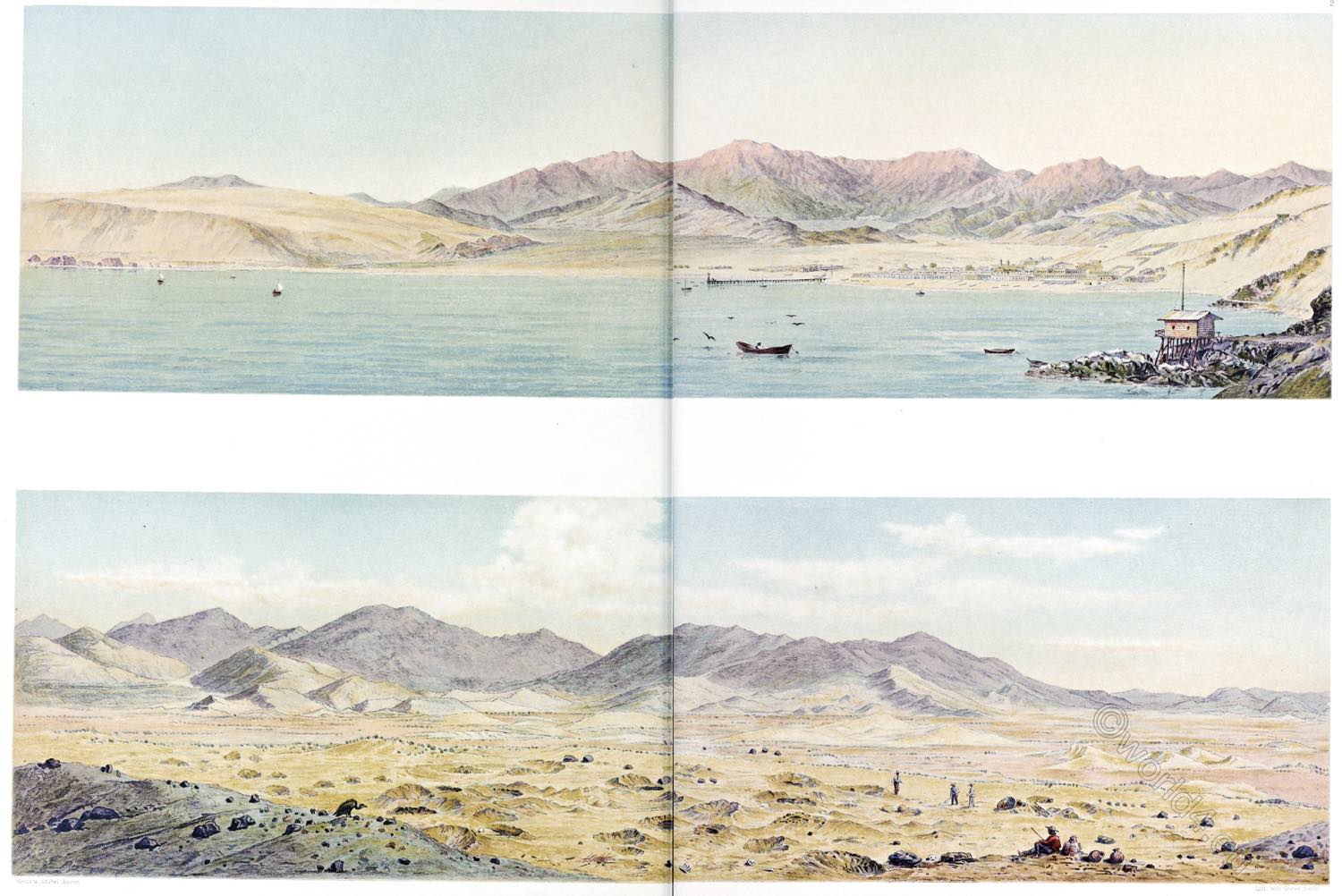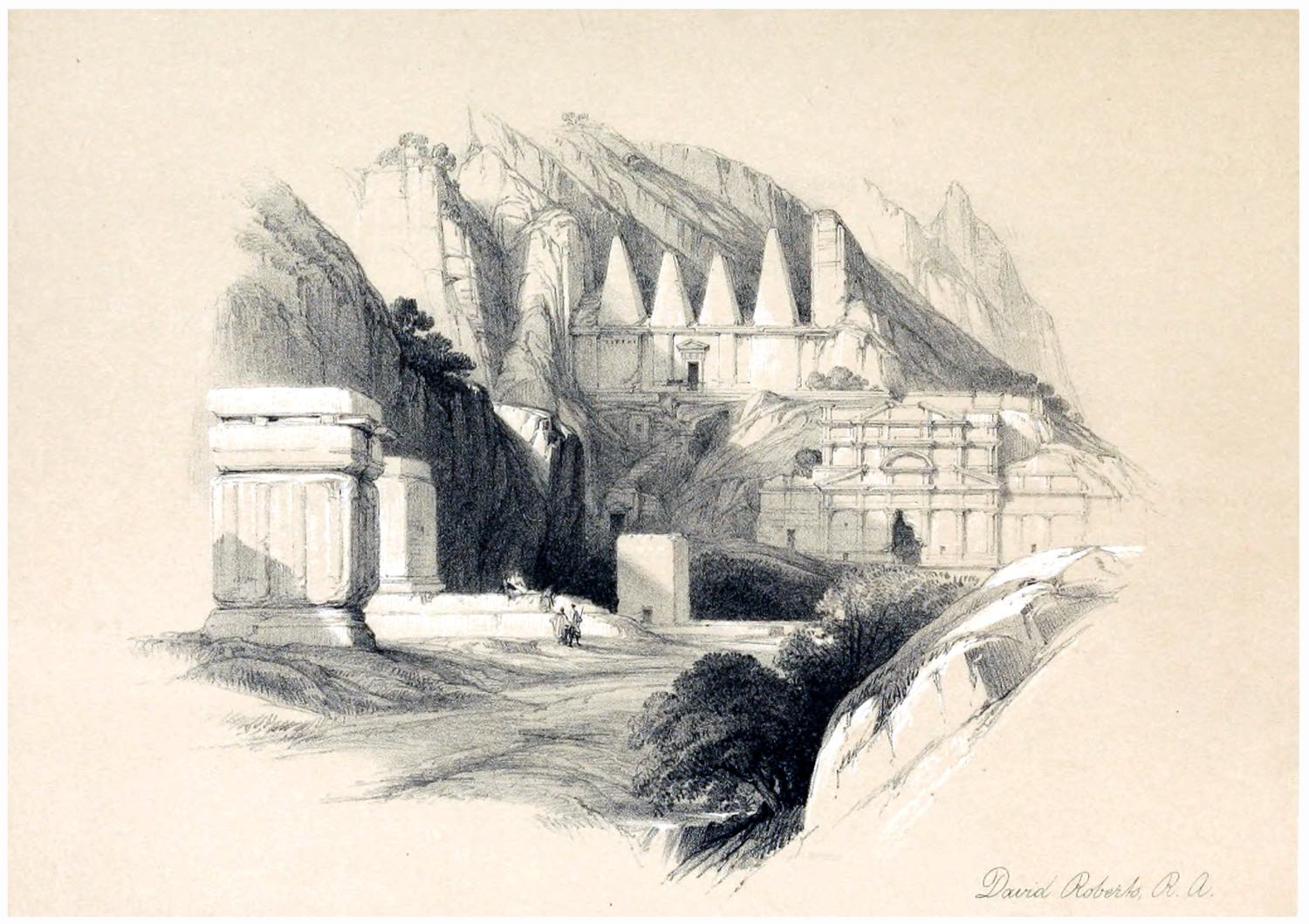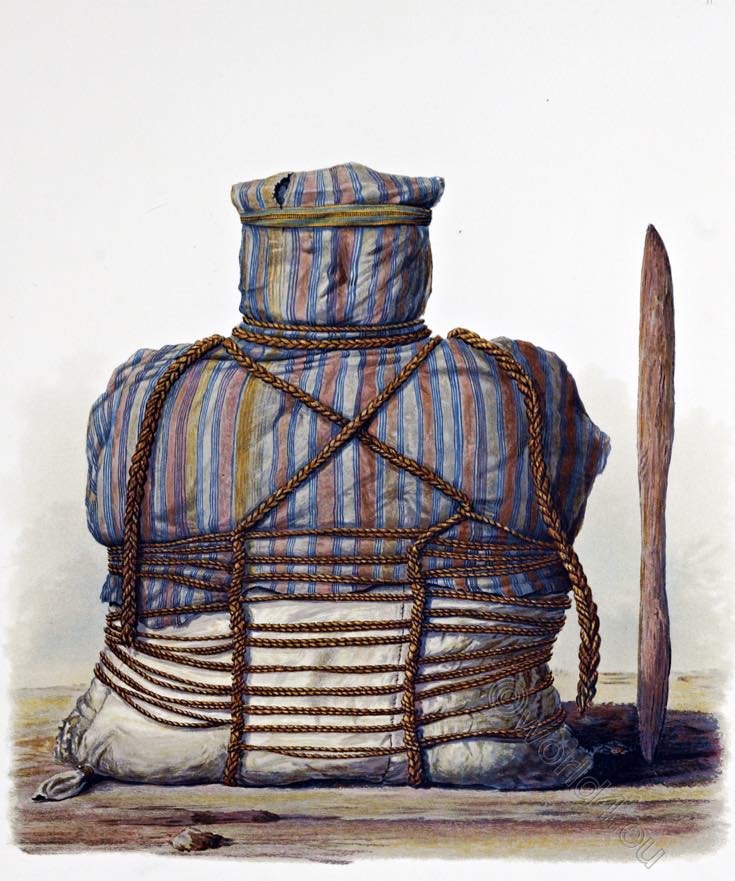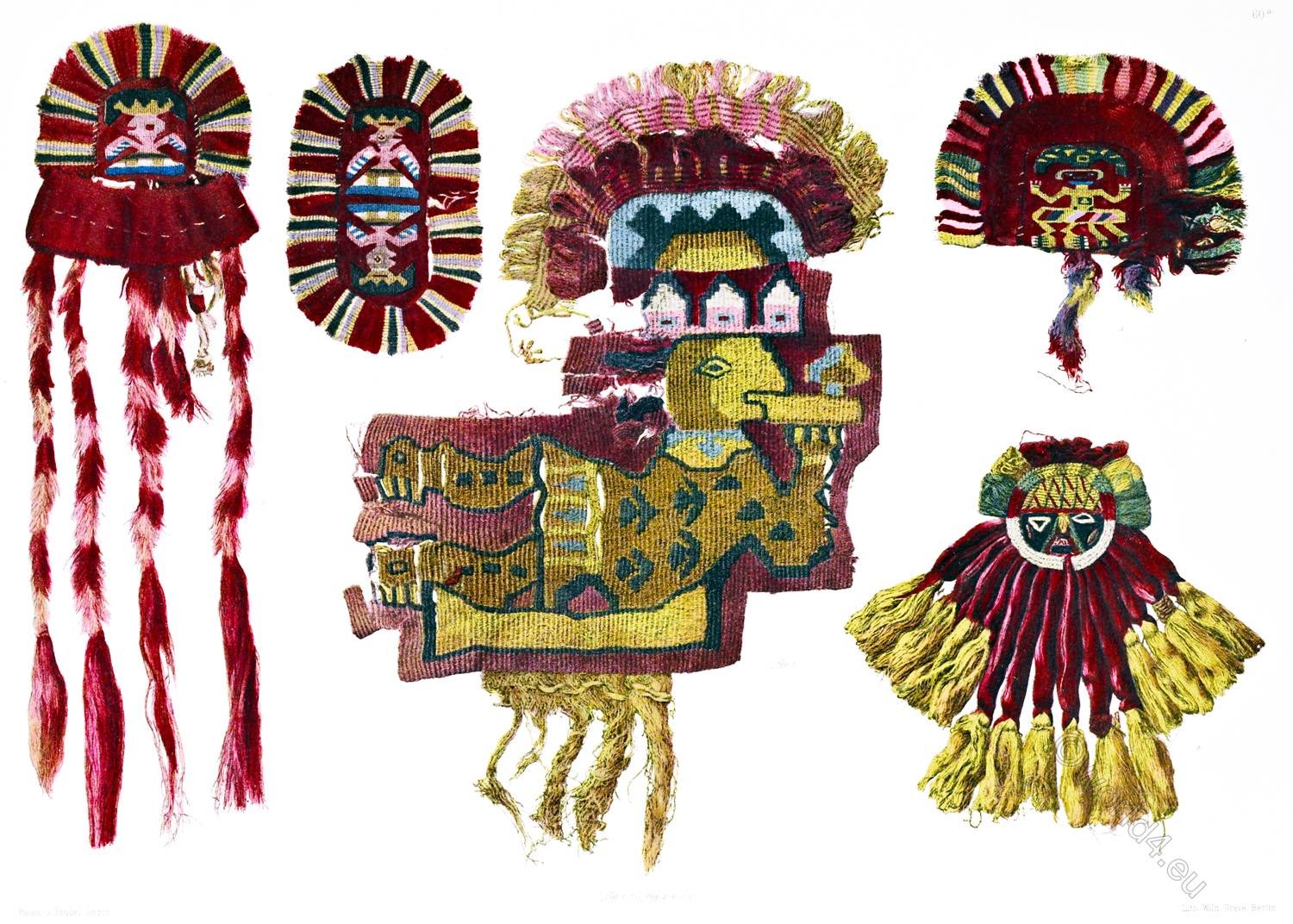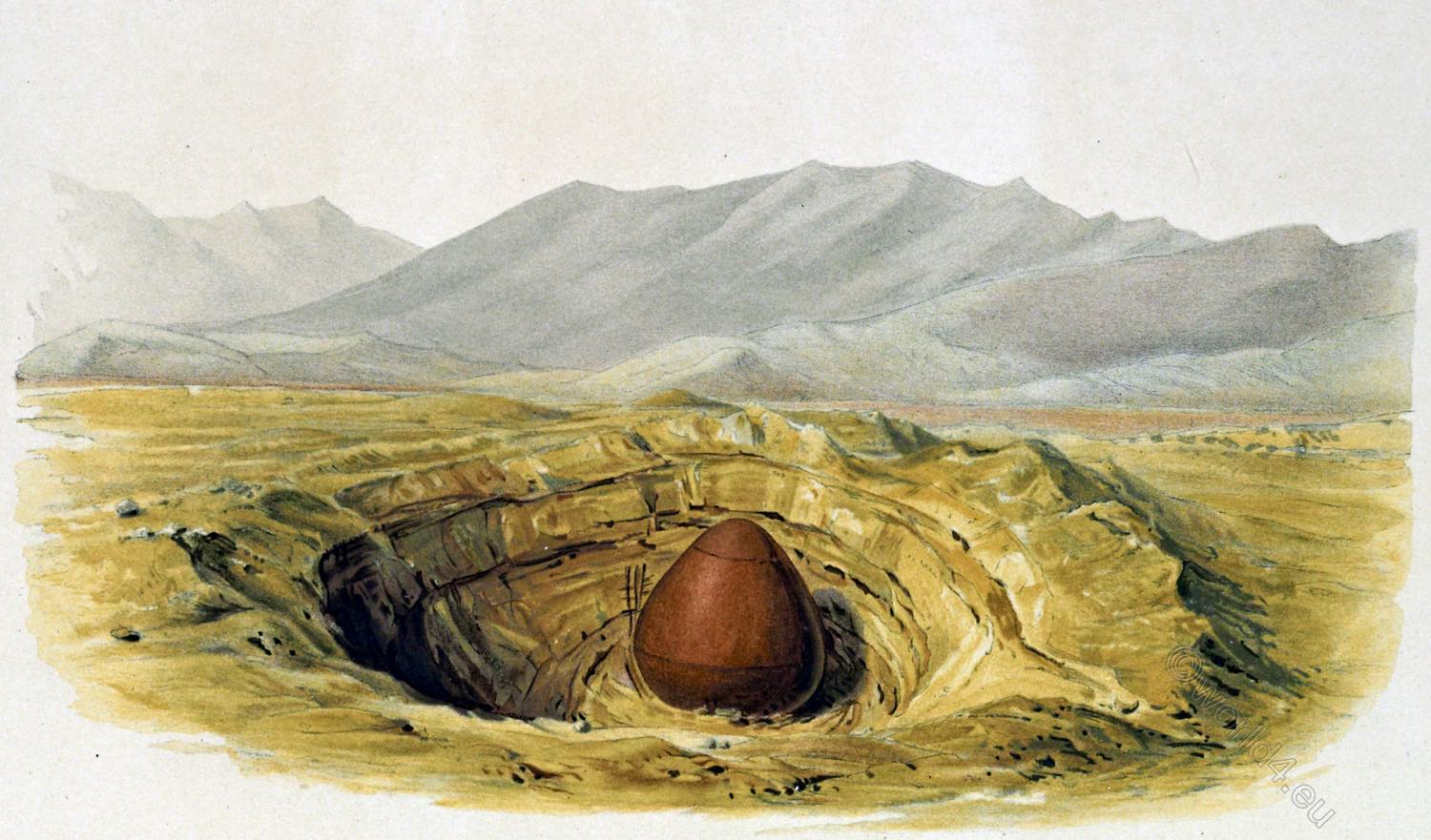
II. The Several Graves.
INTERMENTS UNDER EARTHENWARE VESSELS.
PLATE 8.
On the north side of the Necropolis, at the spot marked by No. 1. on the plan, there were some graves in which the bodies had been buried beneath large earthenware vessels or portions of them. This deviation from the usual practise is all the more noteworthy that we have here a reminiscence of a system of burial widely prevalent amongst many American peoples.
The body is seated in a crouching attitude and wrapped in cerements under one of those capacious earthenware vessels, which were often made of the largest size for storing Chicha (Plate 92). In order to fit over the body, the mouth of the vessel had to be enlarged by breaking off its neck.
Source: The necropolis of Ancon in Peru: a contribution to our knowledge of the culture and industries of the empire of the Incas being the results of excavations made on the spot by Wilhelm Reiss (1838-1908); Alphons Stübel (1835-1904), joint author; Wilhelm Greve, lithographer; Augustus Henry Keane (1833-1912), translator; Ludwig Wittmack (1839-1929); Rudolf Virchow (1821-1902); Alfred Nehring (1845-1904). Berlin: A. Asher & Co.; New York : Sole agent for America, Dodd, Mead & Company, 755 Broadway, 1880.
Continuing
II. The Several Graves.
Plate. 5. The deep grave of the false-headed Mummies.
Plate. 6. Exposed graves with Mummies of simple type.
Plate. 7. Solitary grave of a simple equipped Mummies.
Plate. 8. Interments under earthenware vessels.
Plate. 9. Interments under fragments of earthenware.
Plate. 10. Sections of the graves.
Discover more from World4 Costume Culture History
Subscribe to get the latest posts sent to your email.

